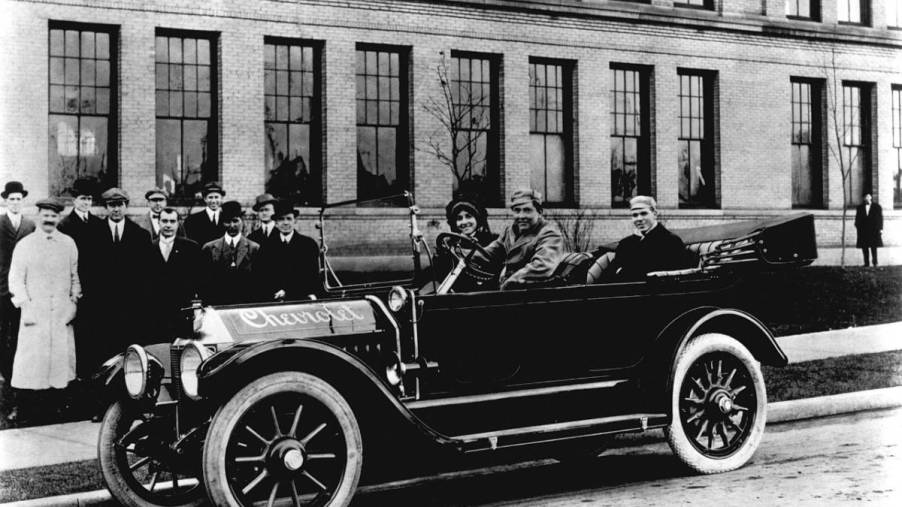
What Was the First Car Chevy Ever Made?
Chevrolet, otherwise known as Chevy, is one of the most iconic divisions of American General Motors (GM). Chevrolet is for its long rivalries with other American manufacturers, such as Dodge, Ford, and Ram. Chevy has a rich history and plays a significant role in developing the automaking industry in the United States. Have you ever wondered what the first car manufactured by Chevy was? Let’s find out.
Chevrolet got its start in Detroit
The founding of Chevrolet started thanks to a significant failure by one man, William Capo Durant.
According to Britannica, Durant founded the General Motors Company in 1908 to consolidate Buick, Oldsmobile, Cadillac, Oakland (now Pontiac), and several others. A year later, Durant decided to go after the Ford company, founded by Henry Ford. Ford was agreeable to selling to GM as long as he could retain rights for motorized farm implements.
An agreement was made between Ford and GM that said GM was to pay $2 million cash plus $4 million at 5% interest over three years. Banks were not comfortable lending yet to the reasonably new automotive industry. Durant’s $2 million load request for the down payment was denied.
The GM Board ousted Durant from the company in 1910 and let the bank take over the company. Durant joined forces with retired Buick race car driver Louis Chevrolet and started the Chevrolet Motor Car Company the following year.
It was not long before Chevrolet introduced its first car to the world.
The first Chevy was the Series C Classic Six
The Series C Classic Six (the Type C) was the first to carry the Chevy name. The prototype was built in 1911, and the first production model debuted at the New York Auto Show in 1913.
This period is called the Brass Era in automotive history. This was when brass fittings were used for lights, radiators, etc. This era ended around the start of World War I, when the car parts had far less brass in them. This was the era when the Type C made its appearance.
Louis Chevrolet directed the design work of the Type C. He approved the low running boards that resembled European cars rather than American. The body, chassis, and wheels were done in Chevrolet blue, and the radiator shell and nameplate on the dashboard were polished metal. The fenders, hood, and splash aprons were black. Finally, the body and wheels featured an accent of gray striping.
The Type C had a six-cylinder cast iron engine with a 299 cubic-inch or 4.8-liter displacement. It had a T-head configuration and was one of the largest displacement engines at the time. The Type C engine could output 40bhp and hit a 65 mph top speed. It was a rear-wheel drive with a 3-speed cone transmission.
The Type C also brought technology and features usually reserved for luxury cars. It had an electric starter and headlamps when such features were rare, even in luxury cars. The Type C also featured four doors, a folding top, and cowl lights.
The Series C Classic Six has little in common with modern Chevy models
Much in the automotive world has happened since the Series C Classic Six was introduced in 1913. The first Chevrolet car has little in common with the more modern models, such as the Corvette and Silverado.
Naturally, automotive technology has come a long way since the Type C. The first Chevy car had very basic mechanical components compared to today’s advanced features. The Type C also had a more boxy and utilitarian design, while more modern Chevy models boast aerodynamic aesthetics.
While the Type C six-cylinder engine was advanced for its time, its output and efficiency are much lower than we see now. The Type C was also manufactured using materials like steel and wood, while more modern models use lightweight materials.


